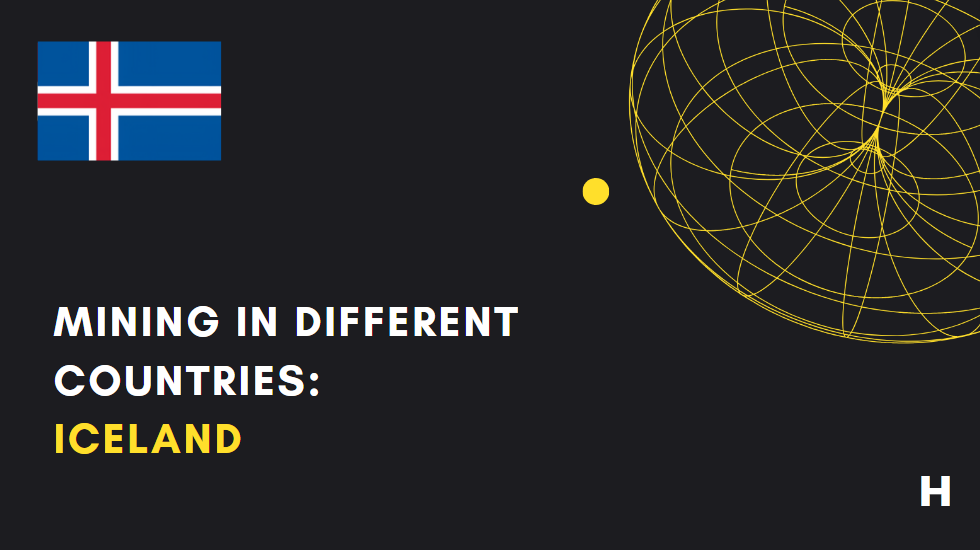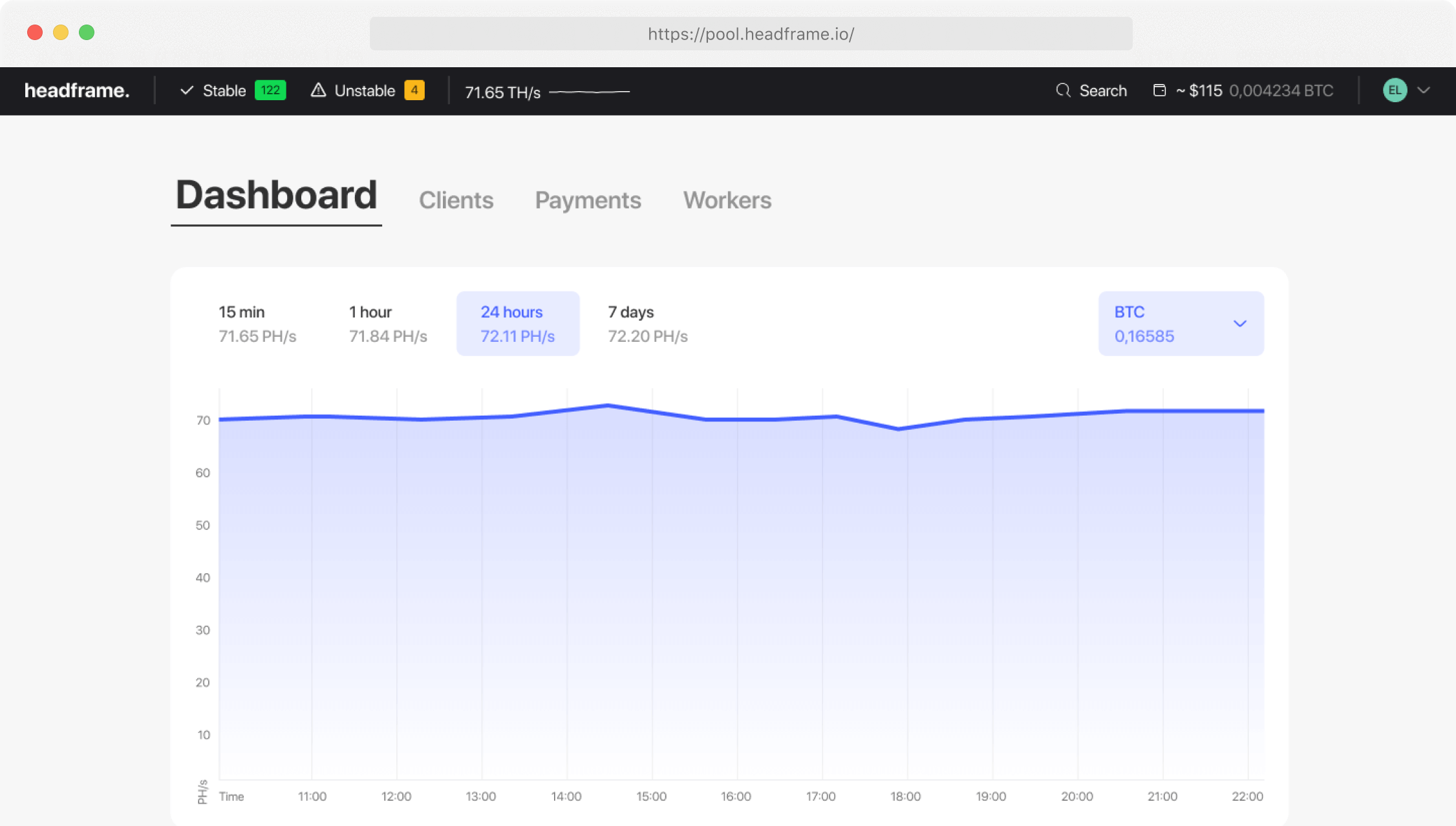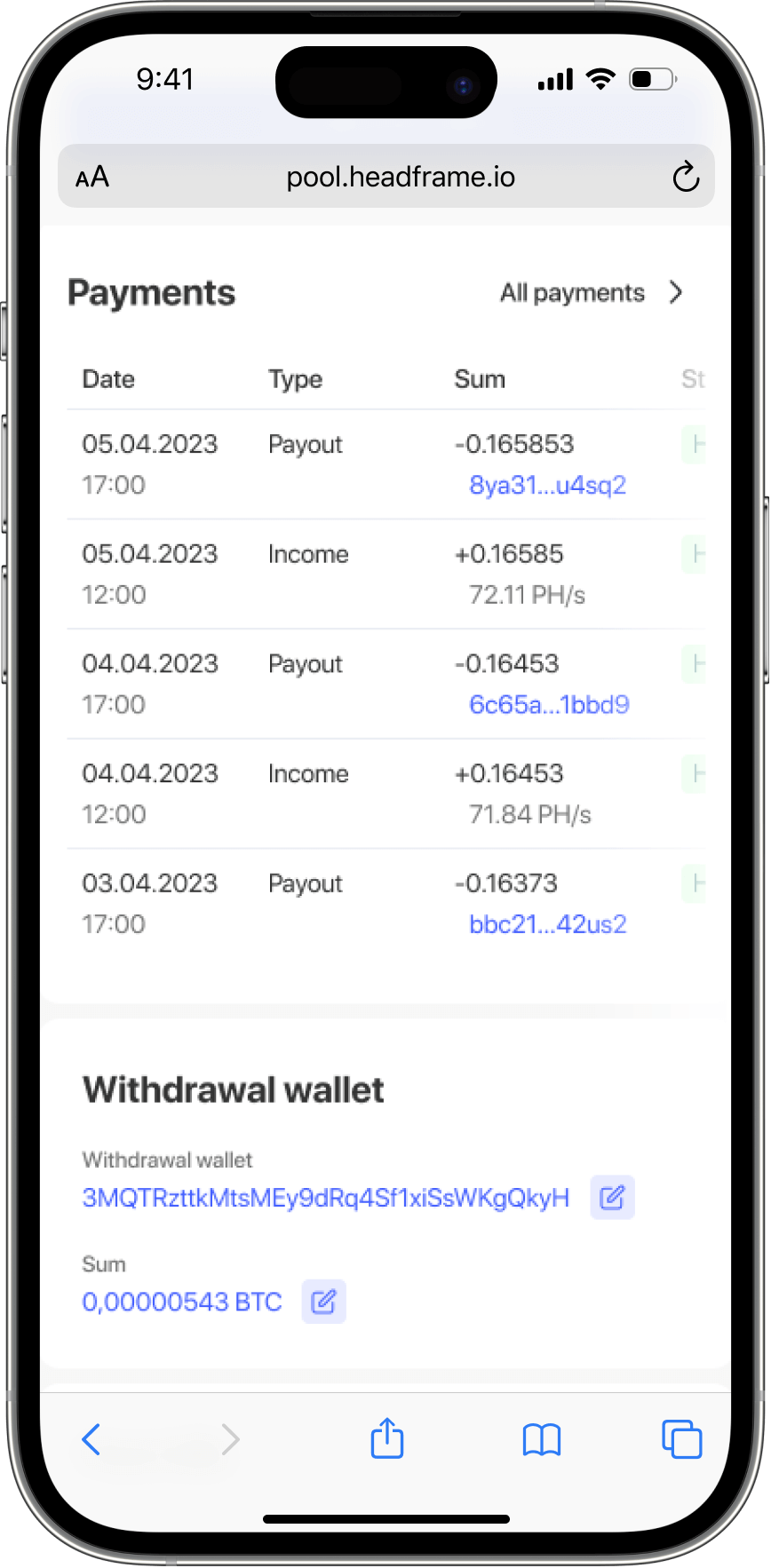
Mining in Iceland
Earn more money with Headframe
Join a mining pool and get the best profitability in mining. Already more than 10,000 miners trust Headframe.
Iceland is the largest per capita hashrate producer in the world.
Iceland’s vast hydro and geothermal energy reserves have made it one of Europe’s last bitcoin mining havens. But what else defines the bitcoin mining industry on this volcanic island?
- Iceland is the largest producer of hashrate per capita
- Volcanoes and waterfalls
- Iceland has some of the cheapest electricity in the world
- The climatic conditions are great for bitcoin mining
- Iceland is one of the most politically stable countries in the world
- Conclusion
Iceland is the largest hashrate producer per capita
Iceland has a long history of bitcoin mining. Thanks to cheap electricity and enterprising locals, it was one of the first countries outside of China to see bitcoin mining on an industrial scale. The country is one of the largest aluminum producers in the world, so people are used to the idea of exporting excess electricity through energy-intensive manufacturing. With this in mind, Icelanders easily embraced the concept of using bitcoin mining to monetize excess energy.
We estimate that the Icelandic bitcoin mining industry consumes around 120 MW. This energy consumption should correspond to Iceland’s 1.3% share of global hashrate mining, based on the Hashrate Index of bitcoin mining energy consumption, which currently stands at 9.3 GW. With a population of only 370,000, Iceland is the most bitcoin-mining saturated country on the planet.
Some of the companies mining in Iceland include Greenblocks, Advania Data Centers, and Borealis Data Center. In addition, many international players such as Genesis Mining, Bitfury, Hive Blockchain and Startmining are currently operating or previously operated here.
Volcanoes and waterfalls
The Viking brigands who once fled Norway and settled in Iceland probably didn’t regret their decision, as they can now enjoy an almost limitless supply of electricity. The mountainous terrain, humid climate, and volcanic geology create the perfect conditions for both hydro and geothermal energy.
Hard-working Icelanders have harnessed their renewable energy sources, creating an impressive electric power system consisting of dozens of hydro and geothermal power plants and a network of transmission lines girdling the island. Iceland is the most electricity-rich country in the world, generating almost twice as much electricity per capita as Norway, which ranks second on the list.
So what does Iceland do with all that electricity? It has no connections to other countries, yet it exports a huge amount of electricity. How? By producing aluminum.
Iceland is the 10th largest aluminum producer in the world and is the largest producer per capita. Like bitcoin mining, aluminum production is extremely energy intensive and can be used to export excess energy. Aluminum production in Iceland uses 70% of Iceland’s electricity.
Iceland and Norway are the only countries in the world that fully utilize renewable energy. Historically, the backbone of Iceland’s electricity system was hydropower, generating 69% of its electricity. Since the 1990s, however, Icelanders have largely developed geothermal power, which currently generates 31% of electricity.
As with bitcoin mining, Iceland is a pioneer in geothermal energy. El Salvador may have gotten the most attention from the bitcoin community with its volcano mining project, but the Icelanders have been quietly mining volcanoes on a much larger scale for years.
Iceland has some of the cheapest electricity in the world
Iceland has the highest per capita electricity production in the world, so it’s not surprising that the country’s electricity is cheap. However, due to the high demand of energy-intensive industries, electricity in Iceland has historically been slightly more expensive than in other Scandinavian countries such as northern Norway and northern Sweden.
Over the previous five years, electricity tariffs set by the utility Landsvirkjun have remained relatively stable in the range of $51 to $71 per MWh. In 2022, the average electricity tariff will be $63 per MWh, which provides a decent margin for next-generation machines, given that the current revenue per MWh for the Antminer S19j Pro is $116.
While miners can certainly find cheaper electricity elsewhere, one of the advantages of Iceland’s electricity system is its complete isolation from the rest of the world, which protects it from global electricity price inflation. There are no connections between Iceland and mainland Europe, and the country is unaffected by fuel prices as all electricity is generated from renewable sources.
All electricity tariffs in the chart above are set by the national company Landsvirkjun. It is the largest producer of electricity, wholly owned by the Icelandic state. The company also owns most of the national electricity grid.
Landsvirkjun and two private power producers sell electricity directly to energy-intensive industries, such as aluminum smelters and bitcoin miners, based on long-term fixed-price contracts. Large consumers with a capacity of more than 10 MW can connect directly to the transmission system or enter into direct agreements with generators and thus receive significantly cheaper electricity
Climate conditions are great for bitcoin mining
There are few countries where a mining farm is easier to operate than in Iceland. The consistently cold climate of this Arctic country provides natural cooling for mining operations that require high temperatures. The average monthly temperature in Reykjavik, the capital of Iceland, ranges from 1C (+34F) to +12C (+53F) during the coldest and warmest months. For bitcoin mining, the climate is unlikely to get any better.
The favorable climate means that maintaining and operating mining facilities is easier than in hotter bitcoin mining centers like West Texas. Miners can easily run air-cooled machines and don’t have to worry about building additional cooling infrastructure. In addition, the machines can last longer. The low failure rate due to the cold climate also means less need for maintenance, which can lead to lower operating costs.
Since Iceland has an almost endless supply of water, miners can use hydroelectric plants to cool their machines.
Iceland is one of the most politically stable countries in the world
Over the past few years, miners in many countries have faced political or regulatory opposition in the form of higher electricity taxes, moratoriums or even bans on mining. Thus, bitcoin miners around the world are increasingly realizing the importance of operating in a politically stable jurisdiction.
Iceland is considered one of the safest and most politically stable countries in the world. Miners have been operating there for almost a decade without any major problems with the authorities, potentially making it the most stable jurisdiction for bitcoin mining in the world.
I would even say that Iceland is a more politically prosperous country for miners than other northern European bitcoin mining centers such as Norway and Sweden. Both of these countries have recently raised electricity taxes on data centers in an attempt to curb the bitcoin mining industry as they want to conserve electricity for more in-demand industries, according to the government. According to Icelandic miners I spoke to, there are no such discussions going on within the Icelandic government.
In addition, the data center industry, and bitcoin mining in particular, is a major industry in Iceland and has become a critical consumer of electricity. Therefore, any government action against this industry will be met with massive lobbying.
And what about taxes? Iceland is not a tax haven: the corporate tax level is 20% and the VAT rate is 24%. VAT also applies to imported products, including ASICs. However, Icelandic miners can avoid import VAT by registering their companies with the Icelandic VAT registry.
Conclusion
Thanks to cheap renewable energy, a cold climate, and political stability, Iceland has developed a significant mining sector generating more than 1% of the bitcoin hashrate. Due to the country’s small population, it is likely the largest per capita hashrate generator, as well as the largest per capita electricity producer and largest per capita aluminum producer.
A stockpile of hydro and geothermal energy has spared Iceland from the energy price inflation that will hit Europe in late 2021, and has made this tiny island one of the last European havens for bitcoin mining.
Iceland is one of the most politically stable countries in the world, and bitcoin miners in the country have been quietly operating without any problems for almost a decade. Unlike its Scandinavian neighbors, this country is likely to remain welcoming to miners and other data centers, as the data center industry is one of the country’s breadwinners along with other energy-intensive industries such as aluminum production.
The biggest hurdle for Icelandic miners is getting access to new electricity. In recent years, the country has seen little to no construction of power plants, making electricity scarce. With waterfalls and volcanoes operating at maximum capacity, it is unlikely that bitcoin mining will see significant growth in the coming years.
Iceland’s two main advantages for bitcoin mining are unrivaled political stability and 100% renewable energy, making the country one of the best places for miners.
Source: https://hashrateindex.com/blog/bitcoin-mining-around-the-world-iceland/


